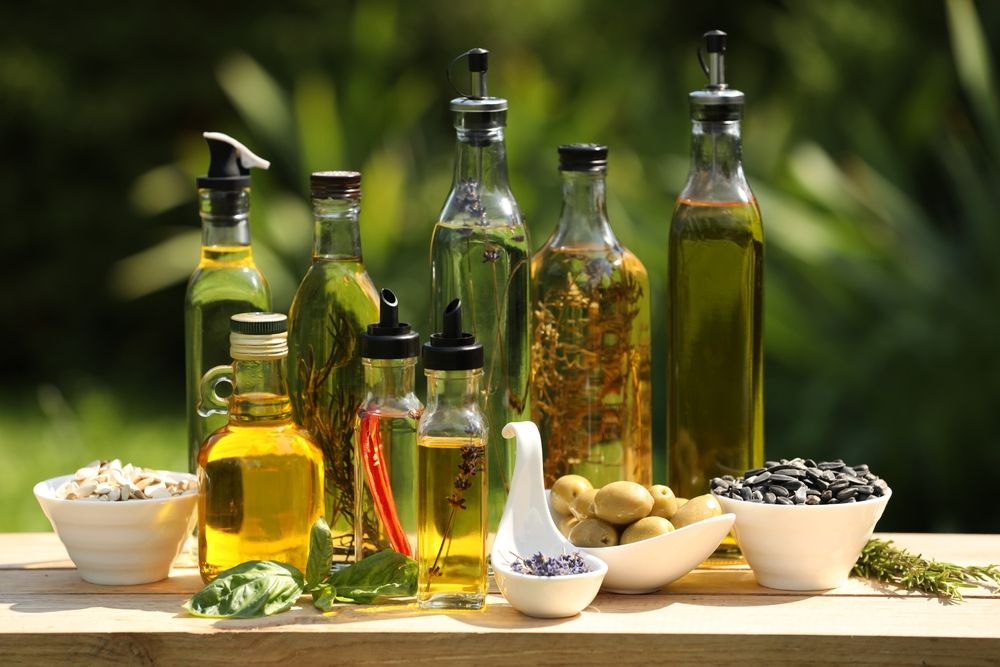Cooking oil is a staple in nearly every kitchen, yet choosing the right one for your health, recipe, and cooking method can be surprisingly complex. Not all oils are created equal—some are ideal for high-heat frying, while others are better suited for salad dressings or light sautéing. The flavor, smoke point, and nutritional value all play a role in determining the best oil to use.
This guide breaks down the most common kitchen oils, what they’re best used for, and how to make smart choices based on your cooking style and health goals.
Understanding Smoke Points
Before diving into individual oils, it’s important to understand the concept of a smoke point—the temperature at which oil starts to burn and break down. When this happens, it can affect the flavor of your food and release harmful compounds.
As a rule of thumb:
-
Low smoke point oils (under 350°F) are ideal for dressings and drizzling
-
Medium smoke point oils (350–400°F) are suitable for sautéing and baking
-
High smoke point oils (above 400°F) are best for frying, searing, and roasting
Always match your oil’s smoke point to your cooking method for better results and safer meals.
Olive Oil
Best for: Sautéing, baking, salad dressings
Smoke point: 350–410°F
Flavor profile: Fruity, earthy, mild (extra virgin) or neutral (refined)
Olive oil is one of the most popular and versatile oils in kitchens worldwide. Extra virgin olive oil (EVOO) is minimally processed and packed with heart-healthy monounsaturated fats and antioxidants.
Use EVOO for salad dressings, dipping bread, or finishing cooked dishes. For higher-heat cooking, use light or refined olive oil, which has a higher smoke point and milder flavor.
Canola Oil
Best for: Frying, sautéing, baking
Smoke point: 400°F
Flavor profile: Neutral
Canola oil is budget-friendly, widely available, and very mild in taste. It’s often used in baking or stir-frying because it won’t overpower other ingredients. It also contains omega-3 fatty acids and has a relatively balanced fat profile.
This oil is a go-to for all-purpose cooking, especially if you need a neutral flavor and a medium-to-high smoke point.
Avocado Oil
Best for: Grilling, roasting, frying, dressings
Smoke point: 480–520°F
Flavor profile: Buttery, grassy, mild
Avocado oil is one of the best choices for high-heat cooking thanks to its incredibly high smoke point. It’s rich in monounsaturated fats and vitamin E, and comes in both refined and unrefined forms.
Unrefined avocado oil has a slight green tint and mild flavor, while refined versions are nearly flavorless—perfect for searing, grilling, or even baking.
Coconut Oil
Best for: Baking, sautéing, frying (in moderation)
Smoke point: 350°F (unrefined), 400°F (refined)
Flavor profile: Sweet, nutty, tropical
Coconut oil is solid at room temperature and contains mostly saturated fat. It adds a rich, tropical flavor that works well in baking, curries, or frying foods like plantains.
Use unrefined (virgin) coconut oil when you want the coconut flavor to come through. Refined versions have a higher smoke point and a more neutral taste.
Note: While coconut oil is popular, its high saturated fat content may not be suitable for all diets.
Grapeseed Oil
Best for: Stir-frying, salad dressings, baking
Smoke point: 420°F
Flavor profile: Mild, slightly nutty
Grapeseed oil is extracted from grape seeds left over from winemaking. It has a clean, light flavor and is rich in polyunsaturated fats.
Its relatively high smoke point makes it a good option for frying and roasting. It’s also a great base for flavored oils or homemade vinaigrettes.
Peanut Oil
Best for: Deep-frying, stir-frying, Asian dishes
Smoke point: 450°F
Flavor profile: Mildly nutty
Peanut oil is a top choice for deep-frying due to its high smoke point and ability to stay stable at high temperatures. It has a subtle nutty flavor that complements Asian-style cooking, including stir-fries and fried rice.
Refined peanut oil is allergy-friendly for most people, but always check labels if cooking for guests.
Sesame Oil
Best for: Dressings, marinades, finishing oil
Smoke point: 350–410°F
Flavor profile: Rich, nutty, aromatic
There are two types of sesame oil: light (refined) and dark (toasted). Light sesame oil has a higher smoke point and can be used for cooking, while dark sesame oil is best as a finishing oil due to its strong flavor.
Use toasted sesame oil to add depth to dishes like noodles, dressings, or grilled vegetables—just a few drops go a long way.
Sunflower Oil
Best for: Frying, baking, roasting
Smoke point: 440°F
Flavor profile: Mild, neutral
Sunflower oil is commonly used in commercial cooking because of its high smoke point and affordable price. It’s made from pressed sunflower seeds and is rich in vitamin E.
Its neutral taste makes it a good fit for dishes where you don’t want the oil to stand out, such as baking or pan-frying.
Flaxseed Oil
Best for: Cold dishes, smoothies, drizzling
Smoke point: 225°F
Flavor profile: Earthy, nutty
Flaxseed oil is rich in plant-based omega-3s, making it a nutritional powerhouse. However, it has a very low smoke point and should never be heated.
Use flaxseed oil in salad dressings, smoothie bowls, or drizzled over roasted vegetables—after they’ve cooled.
Vegetable Oil
Best for: Frying, baking, sautéing
Smoke point: 400–450°F
Flavor profile: Neutral
Vegetable oil is usually a blend of oils (such as soybean, corn, or sunflower) and is one of the most widely used cooking oils. It’s inexpensive, neutral, and versatile.
Because it’s refined and shelf-stable, it’s suitable for most types of cooking, but offers fewer health benefits than some of the more specialized oils.
Choosing the Right Oil for Your Cooking Method
| Cooking Method | Best Oil Options |
|---|---|
| High-heat frying | Avocado oil, peanut oil, canola oil |
| Sautéing | Olive oil, grapeseed oil, sunflower oil |
| Baking | Canola oil, sunflower oil, coconut oil |
| Dressings & dips | Extra virgin olive oil, flaxseed oil, sesame oil |
| Roasting | Avocado oil, olive oil, sunflower oil |
| Cold use only | Flaxseed oil, walnut oil (unrefined) |
The right oil can enhance flavor, improve texture, and boost nutrition—but using the wrong oil can ruin a dish or pose health risks. Keep a few go-to options on hand for different tasks: a neutral high-heat oil for cooking, a flavorful one for drizzling, and a balanced everyday oil like olive or canola for everything in between.
By understanding your cooking needs and matching them to the right oil, you’ll elevate your meals while staying health-conscious and cost-effective.



